Hartwick Pines Logging Museum: Grayling, MI
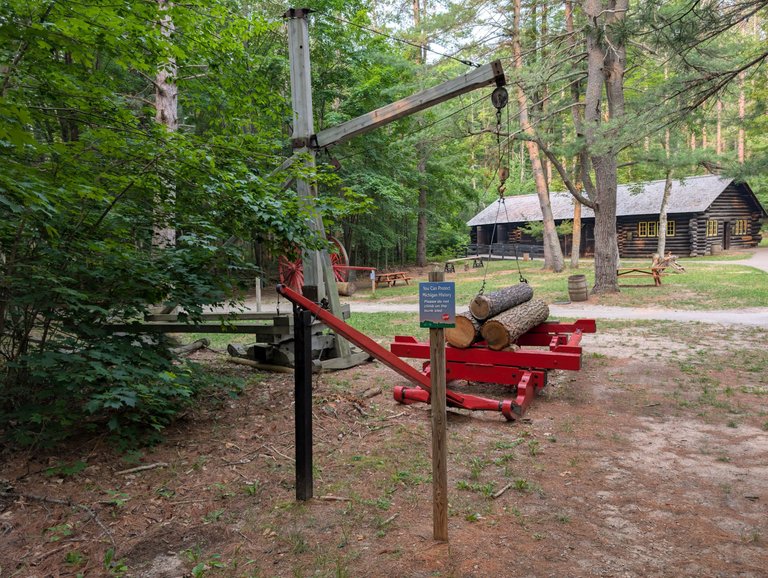
It seems like every state in America sort of has that one thing it is known for. There are even sometimes cases where a state will have a couple things it is known for. Those particular things can even change over the years. Michigan (where I live) is a perfect example of that. While the state is most currently attributed to the auto industry, it also has a rich history of being a major hub in the fur trade, copper mining, and as the title of this post implies, logging.
I mentioned in this post last week that I would be talking about the logging museum in a future post. Well, here we are.
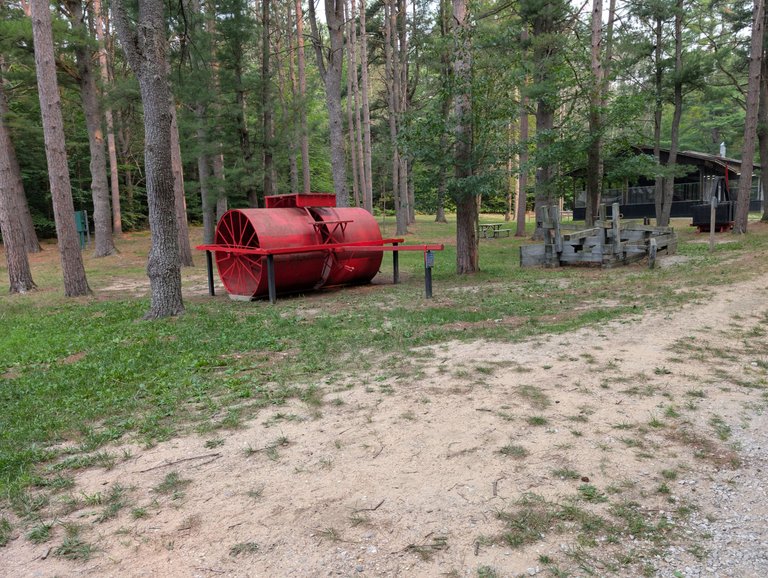
We walked to the logging museum from the day use area of Hartwick Pines State Park, but there is a separate parking lot for the museum if you want to just visit that. As you can see from the photos above, they have a variety of equipment on display that was used back in the day for the logging business.
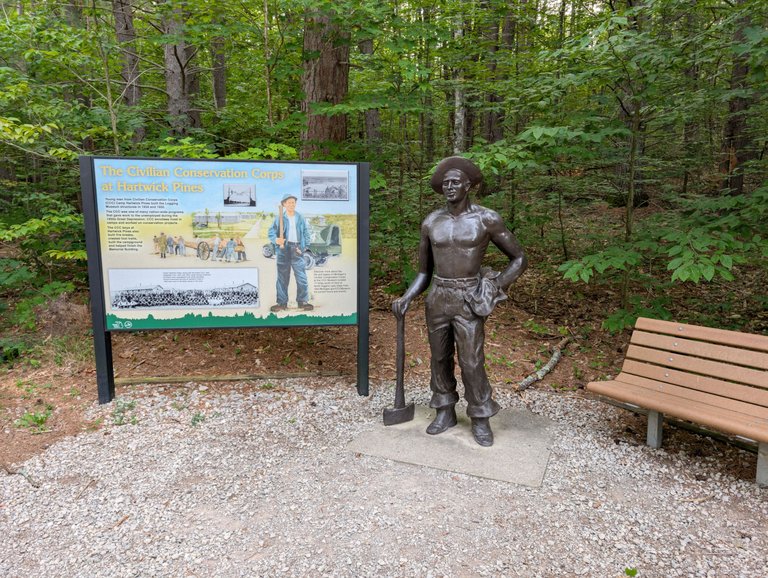
I'm going to count on Google and Gemini to give you a bit of history on the industry in Michigan, but the photos are all mine. The logging boom in Michigan really started thanks to the French and British visitors who used the abundant white pine timber for forts, ships, and other structures.
In the 1830's the commercial logging era began with our beloved white pine (state tree of Michigan) being used across the country for just about everything. In fact, from 1869 to 1900 Michigan was the leading lumber producer in the US.
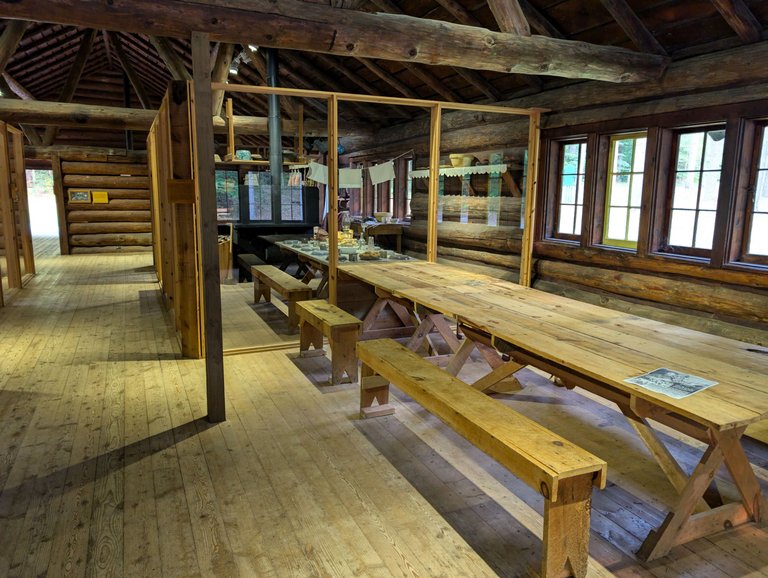
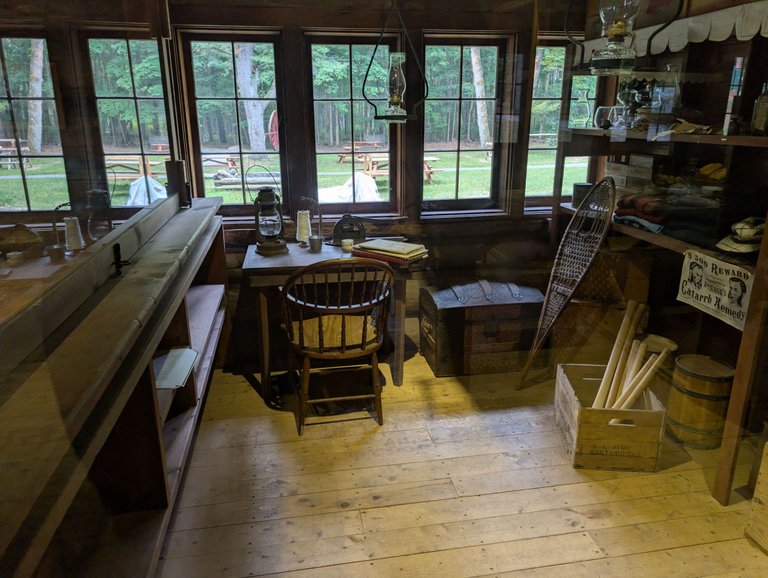
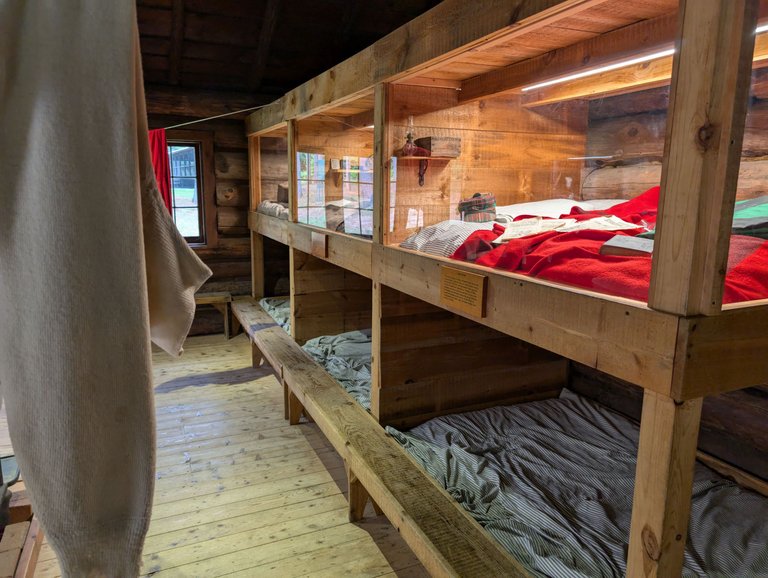
Along with the outdoor equipment I already showed, the museum also consists of several buildings that help show what life may have been like in a typical logging camp back then. It looks a bit cramped to me, but they weren't too concerned about luxury back then, just getting the trees down and sent along the river.
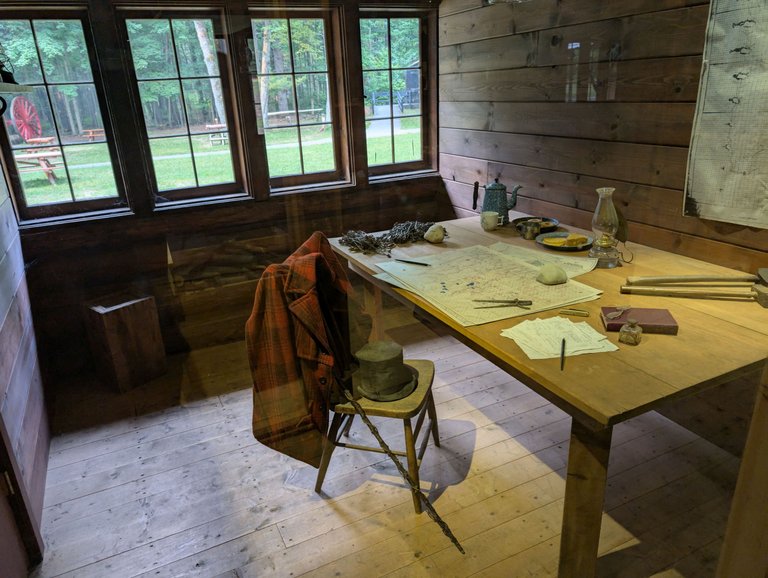
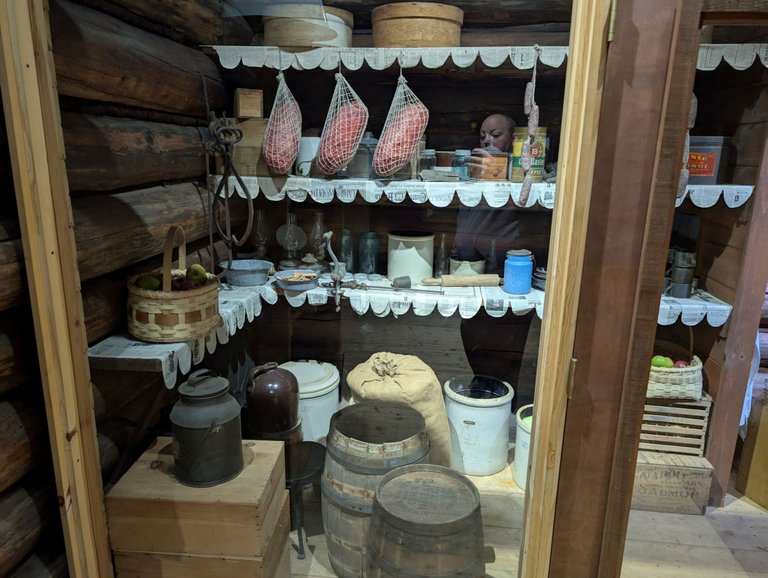

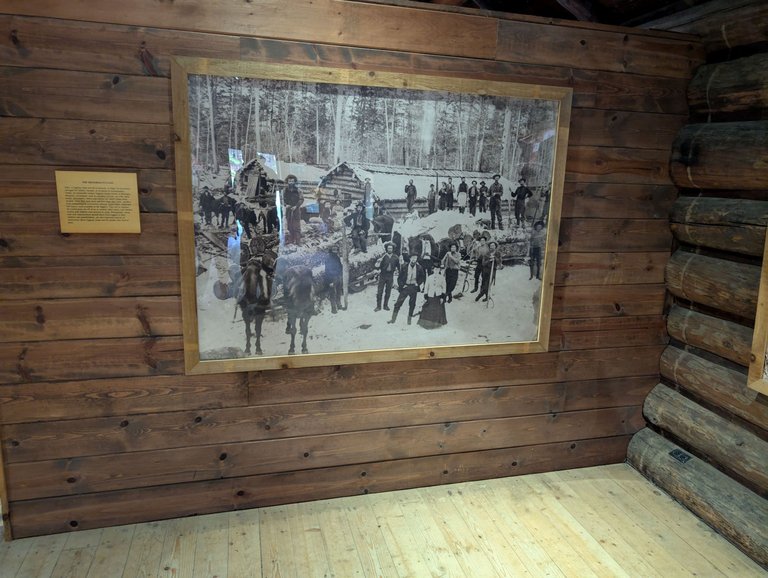
The abundance of inland waterways in the state that also lead to the Great Lakes made it fairly easy for loggers to transport the timber to a place where it could be shipped across the country. One of the key areas was the Saginaw Valley which would be considered the general area where I live and grew up. It's hard to imagine what the area must have looked like when it was covered with majestic white pines.
It's a bit sad in a way.
As you might imagine, there wasn't much foresight back then and it wasn't until the early 1900's that people started to realize we needed to conserve some of these areas from the logging industry.
This is actually a good information site if you want to find out more
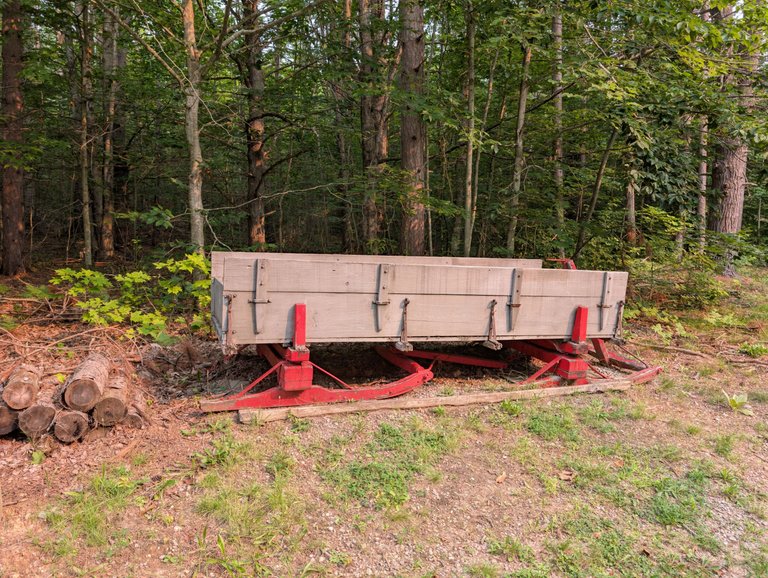
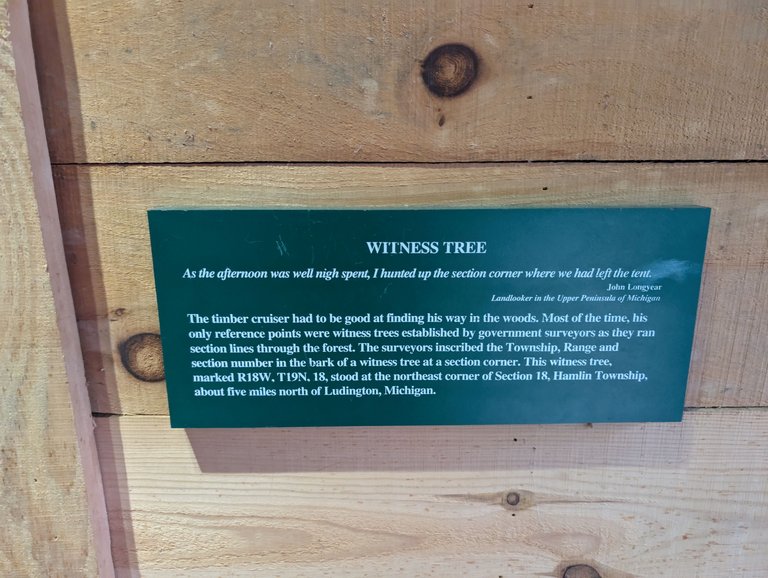
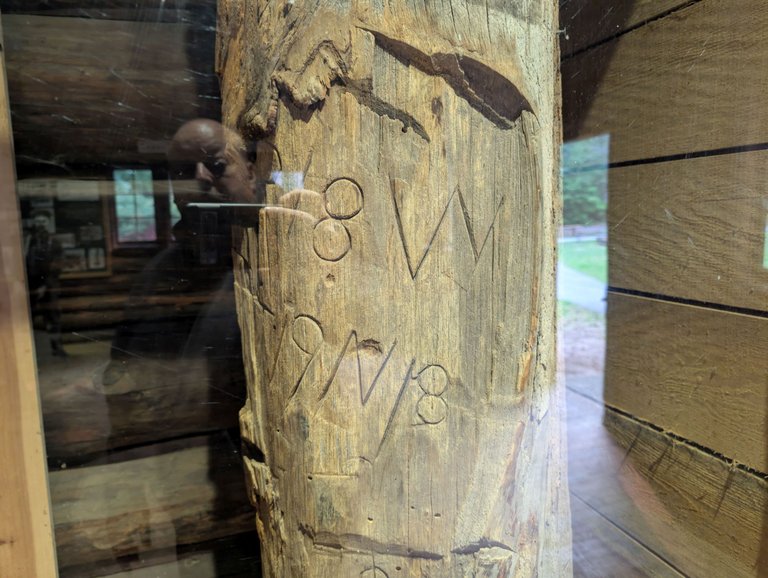
The museum itself has a ton of information along with cool artifacts and exhibits like the ones you see above. There are actually museums like this all across the state for different industries or pieces of our history. I think the Michigan park system does a really good job of preserving that sort of stuff and putting it on display for visitors.


In the final building we visited, they had this scale model of what a typical logging camp may have looked like back in the day. It's actually impressive the number of photos they also have. I am always shocked at how long the camera has been around.
I was talking to @silversaver888 the other day about how many of the small towns in the middle of Michigan have these random massive mansions in the older part of the town. It's pretty clear now given the prominence of the timber trade in the "middle of the mitten" that many of those houses were likely built by and for lumber barons or higher ranking members of the business.

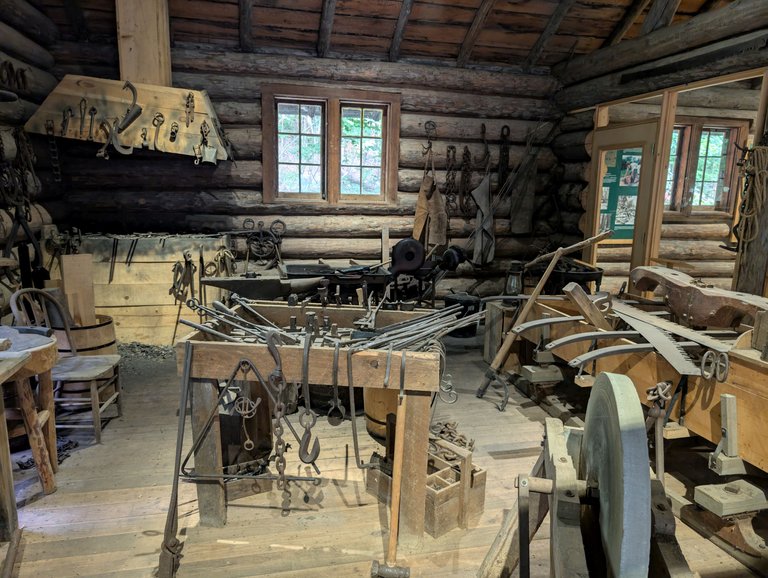
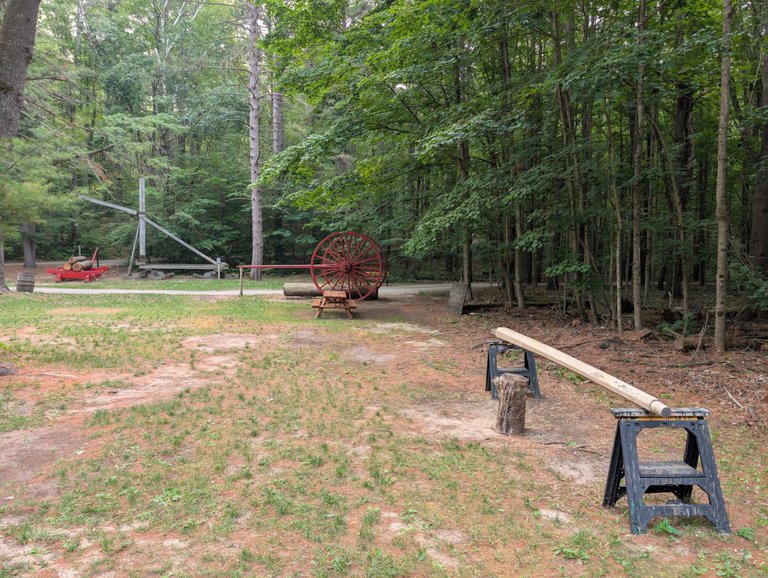
The logging industry is still sort of active in the state of Michigan. It isn't uncommon to be traveling through one of the more wooded areas and see flatbed trucks loaded with logs or sections of the forest that have been clear-cut. Thankfully, they are a bit more cautious about where and what they cut. In fact, I was driving across the state with @mrsbozz earlier this summer and I noticed some areas where they had recently cut away the lumber.
If you looked really closely, you could see rows upon rows of small white pine trees that had been planted in place of the ones they cut down. Perhaps in a couple hundred years these areas will be as majestic as they once were.
Then the cycle will repeat itself (assuming we are still using wood!).
The Hartwick Pines Logging Museum was a great way to spend our Saturday morning. If you ever get the chance to check it out, I highly encourage it. It's a beautiful setting and highly informational. I couldn't possibly cover it all in this short post!
My Sports Account - @bozz.sports


They really preserved it. I like how the museum look like. As a person who loves artifacts and wooden crafts, it's perfect for strolling and viewing for me.
It was really neat. We have a lot of historic sites like this throughout the state.
I had no idea MI using to have a big lumber industry. Interesting! That would be a cool place to visit.
It was really interesting.
I’ve only ever seen logging in movies or in short videos, so it’s wild to imagine it being such a huge part of Michigan’s history
Yes, it's pretty impressive. It's actually kind of shocking we still have as many trees as we do.
Washington state is also know for logging, we are the Evergreen state after all :) But when I think of Michigan I think of the automotive industry in Detroit and now the Great lakes thanks to you posts where it looks like a sea or an ocean from the shore of a lake.
We can get glimpses of what it probably used to look like in some of the protected areas and up in the UP. The canopy is quite dense and people have been known to get lost. Then you throw in the lakes and it's even better!
Beautiful photographs.
Thank you! It was a really lovely morning for us!
Hiya, @lizanomadsoul here, just swinging by to let you know that this post made it into our Honorable Mentions in Travel Digest #2649.
Your post has been manually curated by the @worldmappin team. If you like what we're doing, please drop by to check out all the rest of today's great posts and consider supporting other authors like yourself and us so we can keep the project going!
Become part of our travel community:
Wow! That sounds like such an interesting place to visit. I like how you shared the rich history of Michigan’s logging industry.
Also, it’s encouraging to see how conservation efforts have changed the way logging is done today. The museum seems like a great spot to connect with history while appreciating nature’s beauty.
Thank you! It's a pretty cool place to visit. It doesn't have the lake views that some other areas of the state does, but the history and nature here is pretty amazing.
Wow! Thank you! I think I'll pen that down in my bucket list.
Hehe you should have spent time on the old North Sea oil platforms if you thought the logging camp was cramped 🤣
What a brilliant museum that is. I knew Detroit was where a heap of cars were made, but that is the extent of what Michigan is known for.
Oh, we have so much more to offer here! It's quite a wonderful history in this state. I can only imagine what the oil platforms must have been like!
https://bsky.app/profile/did:plc:u37t33dyaufvrqujwmvm54ln/post/3lw4ne7bk6s2b
https://bsky.app/profile/did:plc:u37t33dyaufvrqujwmvm54ln/post/3lw4ne7bk6s2b
The rewards earned on this comment will go to the author of the blog post.
Hello!
How interesting this insight you give us into the culture of the logging industry, and specifically the pine industry.
I've been imagining that era, about which so many stories are still unknown...
Thank you so much for taking us on this exquisite journey!
!hbits
!Sloth
!MMB
!STRIDE
!HUG
!INDEED
!WEIRD
roswelborges, you mined 0.9 🟧 HBIT and the user you replied to (bozz) received 0.1 HBIT on your behalf as a tip. You can receive 100% of the HBIT by replying to one of your own posts or comments. When you mine HBIT, you're also playing the Wusang: Isle of Blaq game. 🏴☠️ | tools | wallet | discord | community | daily <><
What's more, you found 1.0 ⚪ BLAQ pearl as a bonus treasure token!

Your random number was 0.055044227225150566, also viewable in the Discord server, #hbit-wusang-log channel. Check for bonus treasure tokens by entering your username at block explorer A, explorer B, or take a look at your wallet.
There is a treasure chest of bitcoin sats hidden in Wusang: Isle of Blaq. Happy treasure hunting! 😃 Read about Hivebits (HBIT) or read the story of Wusang: Isle of Blaq.
Thank you! It's tough to imagine what it must have been like in the 1800's.
So interesting that you have such museum to showcase the beauty of the woods. I never seen them before. Even the place which has huge Paine forest, they display wooden items in the market but no one showcase the uses of woods in such a fantastic way.
Oh yeah, logging was a pretty big part of the history in this area, so there are a wide range of places like this across the state. It helped to make our state what it is today.
You can check out this post and your own profile on the map. Be part of the Worldmappin Community and join our Discord Channel to get in touch with other travelers, ask questions or just be updated on our latest features.
This unique museum is wonderful. I believe it represents a window into Michigan's lumber industry and offers a wonderful message about thoughtful planning before uncontrolled resource depletion. Unplanned depletion can leave a void that won't be filled for generations.
Yes, it was a very cool place rich with history. It's sad we couldn't figure out a way to more sustainably harvest timber sooner.
Wow, it's really a quirky and interesting place.
Thanks!
This post has been manually curated by @steemflow from Indiaunited community. Join us on our Discord Server.
Do you know that you can earn a passive income by delegating to @indiaunited. We share more than 100 % of the curation rewards with the delegators in the form of IUC tokens. HP delegators and IUC token holders also get upto 20% additional vote weight.
Here are some handy links for delegations: 100HP, 250HP, 500HP, 1000HP.
100% of the rewards from this comment goes to the curator for their manual curation efforts. Please encourage the curator @steemflow by upvoting this comment and support the community by voting the posts made by @indiaunited..
This post received an extra 2.45% vote for delegating HP / holding IUC tokens.
You received an upvote of 100% from Precious the Silver Mermaid!
Please remember to contribute great content to the #SilverGoldStackers tag to create another Precious Gem.
I think it's great that the logging industry realized the importance of planting new trees to replace what they take. Conservation and restoration should have a nice balance. Logging has become much more responsible throughout the country thank goodness, but in the Amazon they don't want to reforest what they claim for farming. It's a shame!
What a cool place! I read an article about Grayling to today as a matter of fact recommending it's worth a visit. That's where the ferry can carry you out to the island am I correct?
Nice pictures and very cool to see an old logging camp. I sure wouldn't want to have worked in one of those. No chain saws back then, you had to put your back into it!
Yeah, it is too bad. They should be able to look at our area and take a cue from that, but it seems they don't care. I fear they will realize it after it is too late. No, Gralying is kind of in the middle of the lower peninsula. There are a couple Ferries in Michigan, but they leave from other places along the coast.